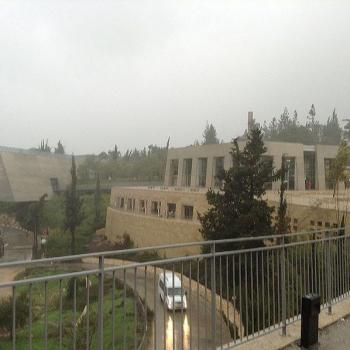
Some of you, I think, will be interested in this ninety-minute interview:
“Mayim Bialik Explores Near-Death Experiences With Bruce Greyson, MD, in Not-To-Be Missed ‘Breakdown’ Podcast.” Neuroscientist and actress Mayim Bialik, Ph.D., interviewed IANDS founder and University of Virginia Professor Emeritus Bruce Greyson, MD, in a compelling episode of her ‘Breakdown’ podcast.
And here’s a seventy-minute podcast conversation that Oprah Winfrey recently had with Dr. Greyson: “See the Remarkable Oprah Interview with IANDS Co-Founder Bruce Greyson: IANDS co-founder Bruce Greyson recently sat down for an interview with the legendary Oprah Winfrey. See the full Oprah Interview here!”

I want to share a couple of passages here from Sebastian Junger’s 2024 autobiographical book In My Time of Dying: How I Came Face to Face with the Idea of an Afterlife. Junger, the bestselling author of such books as The Perfect Storm, was raised as a religious skeptic and, although he now seems to be wavering just a bit because of his own close encounter with dying, he seems pretty clearly to be still committed to religious skepticism. But he recognizes serious challenges to the worldview that he inherited.
In 1998, Dr. Greyson and two colleagues, Emily Cooke and Ian Stevenson, published a series of extraordinary accounts of near-death experiences in the Journal of Scientific Exploration. As explained in the abstract, they wanted to examine fourteen cases that, in their opinion, gave credence to the idea that individual consciousness survives death. Some cases were drawn from popular accounts published in newspapers, and some were from their own files. The researchers attempted to track down people from the accounts—sometimes decades later—and were able to confirm the stories in only the most general sense. It goes without saying that these are self-reported stories that, by definition, are impossible to confirm. The core experiences in the stories are remarkably consistent, though, and as I read them, I found it hard to imagine that deliberate falsifications would converge in such dramatic ways. In every case cited by Greyson and his colleagues, the dying person found themselves outside their body and often looking down from above as doctors or bystanders tried to save them. Many also claimed to have perceptions that were not constrained by ordinary human perspectives. “In my wanderings there was a strange consciousness that I could see through the walls of the building,” recorded a British army officer named Alexander Ogston, who almost died of typhoid fever at a military hospital around 1900. “I saw plainly, for instance, a poor Royal Army Medical surgeon, of whose existence I had not known, and who was in quite another part of the hospital, grow very ill and scream and die; I saw them cover his corpse and carry him softly out on shoeless feet, quietly and surreptitiously, lest we should know that he had died. . . . Afterwards, when I told these happenings to the sisters [nurses], they informed me that all of this had happened.” According to Greyson and his colleagues, a nurse named Jean Morrow contacted them in 1991 to give her experience of almost dying in childbirth decades earlier: “Due to blood loss, my blood pressure dropped. When I heard, ‘Oh my god, we’re losing her,’ I was out of body at once and on the ceiling of the operating room looking down—watching them work on a body.” Her account is similar to one given to Greyson by Peggy Raso, who barely survived a pulmonary embolism after giving birth to a healthy baby: “I, the real me, was not on the bed, and I began to think about this. . . . I looked down at the bed from my vantage point near the ceiling. I saw a girl there who looked to be in a great deal of pain. . . . I felt sorry for her. Doctors and nurses were coming and going from the room. I saw one doctor hit her hard on the chest. I tried to tell them I was not there. I saw a doctor come to the station that I recognized. He was a family friend and I had been raised next door to him. The nurse told him [Peggy Raso] had just died. He replied he would call Margaret (my mother). My hearing was extremely acute. I heard and saw another patient on the floor complaining about the activity and noise coming from my room. It dawned on me they were talking about me. I tried to tell them I was not down there. It became obvious they were not hearing me.” Another recurring theme in many near-death experiences is encountering dead loved ones and other spirits. Not only have researchers documented this from around the world, but virtually every society believes that when you die, you will be reunited with loved ones who have already passed. This belief exists in the entire spectrum of human society, from small-band hunter-gatherers to mass industrialists, and forms a core part of almost all religions, including Christianity.

This passage from In My Time of Dying may perhaps make more sense to you if you have first read my brief 2014 Deseret News article “Diving into the afterlife in Hawaii.” Te Rerenga Wairua, the place to which Nga refers in the passage below, is also known as Cape Reinga and is located in the extreme north northwest of the North Island of New Zealand:
Not only does the brain seem to continue functioning, it has experiences that are consistent across many, many cases. A study of near-death experiences around the world found some cultural variations—people from Anglo-European society were more likely to describe a journey through darkness as a “tunnel” rather than a “void”—but the basic contours of the experience were remarkably similar. The dying generally recall rising over their bodies, journeying to another realm, encountering dead relatives, and returning. A Māori woman named Nga, for example, recounted her brush with death to New Zealand author Michael King: “I became seriously ill for the first time in my life,” Nga said. “I became so ill that my spirit actually passed out of my body. My family believed I was dead because my breathing stopped. . . . I had hovered over my head and then left the room and traveled northwards, towards the Tail of the Fish. I passed over the Waikato River, across the Manukau, over Ngāti Whātua, Ngāpuhi, Te Rarawa, and Te Aupōuri until I came to Te Rerenga Wairua, the leaping-off place of souls.” At that point, a voice told Nga to go back because it was not her time. She regained consciousness in her body, surrounded by family members.

- “At BYU, leaders say the religious should learn the believer-friendly term ‘human flourishing’: It’s more than a hot research topic. ‘Flourishing’ gives the faithful reasons for the hope within them and for defending religious liberty, speakers say”
- “2 Primary Children in Arizona Collect 2,400 Pairs of Shoes for Donation: ‘No one is too young to serve like Jesus did,’ says JustServe specialist”
How long will decent, rational people allow such brazen offenses to go on?










